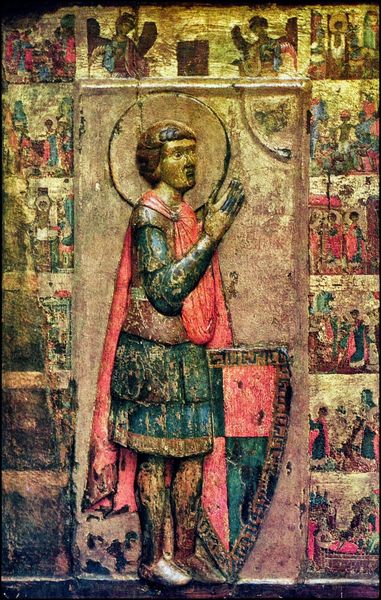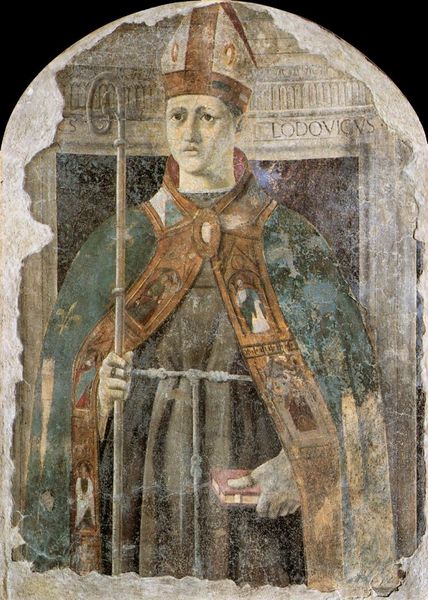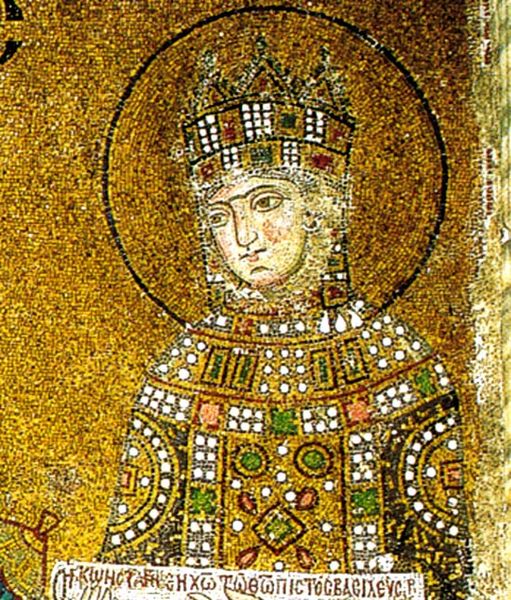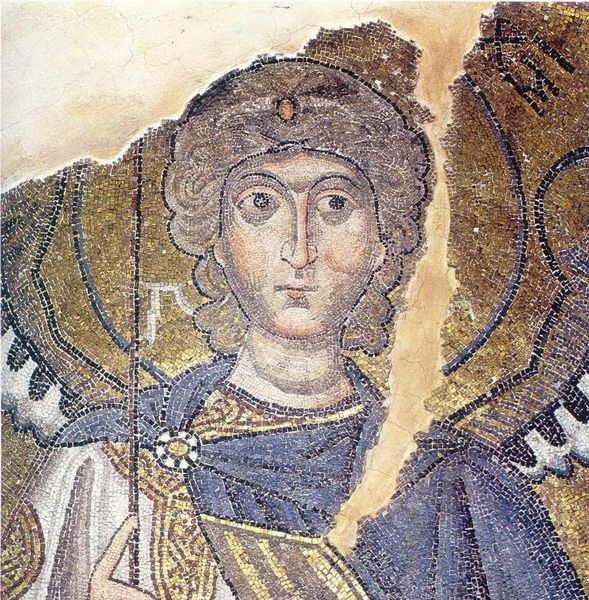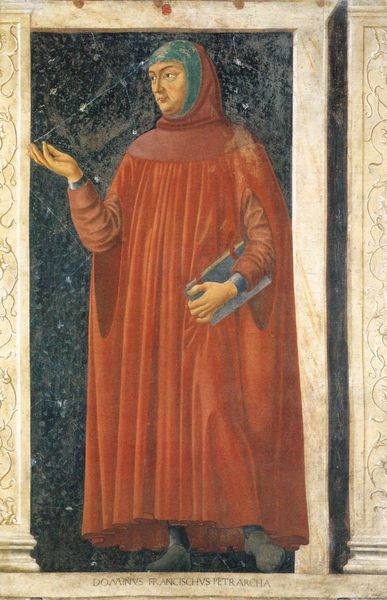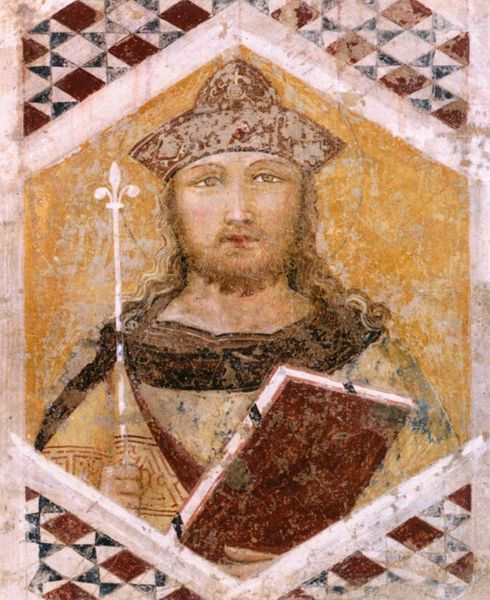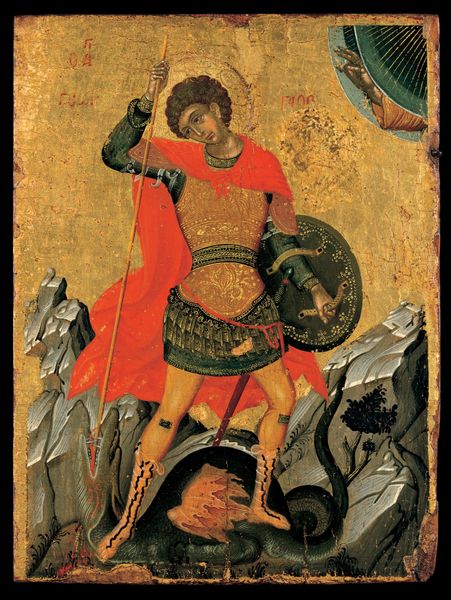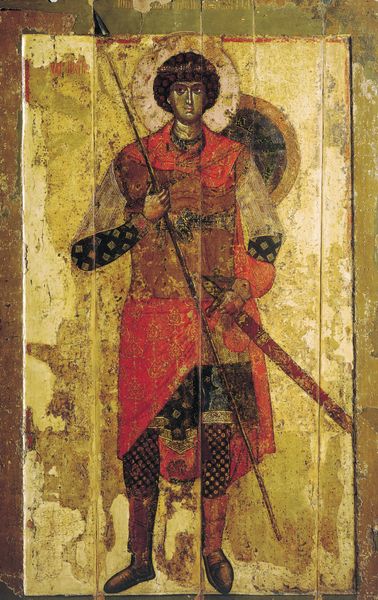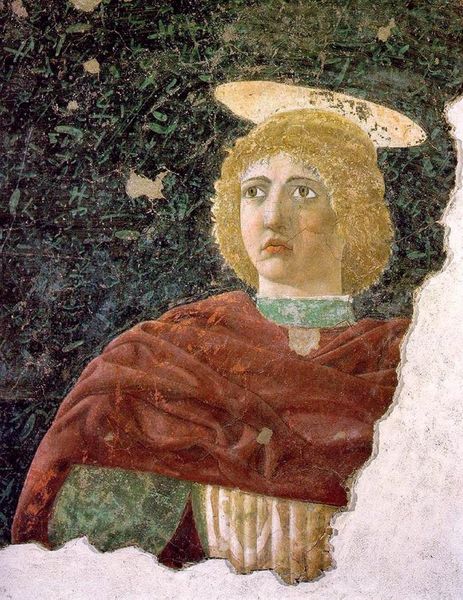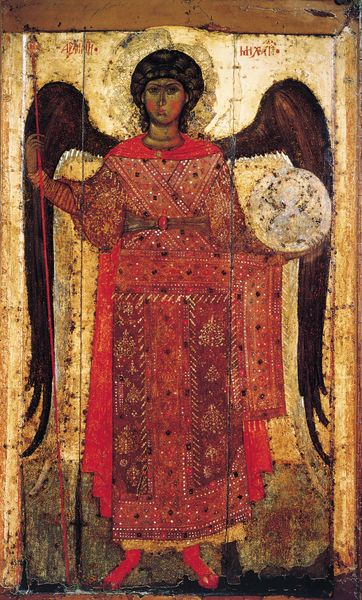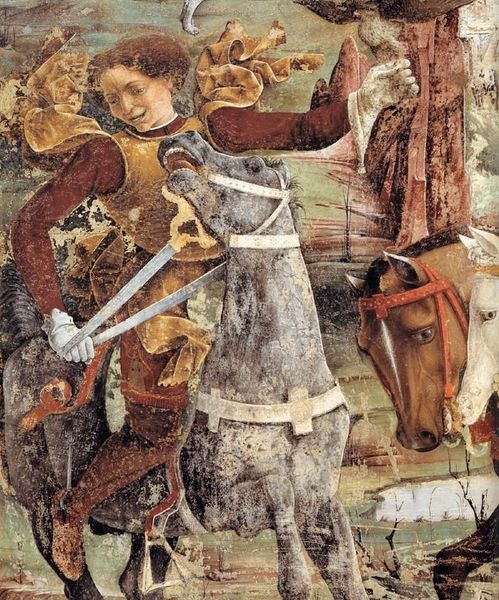
Saint George (front side) 1125
0:00
0:00
orthodoxicons
Dormition (Assumption) Cathedral of Moscow Kremlin, Moscow, Russia
tempera, painting
#
byzantine-art
#
narrative-art
#
tempera
#
painting
#
figuration
#
oil painting
#
geometric
#
painting art
#
history-painting
Dimensions: 174 x 122 cm
Copyright: Orthodox Icons,Fair Use
Curator: Here we have "Saint George," an icon created around 1125. It now resides in the Dormition Cathedral of the Moscow Kremlin, and the piece is made with tempera. Editor: Oh, my. What strikes me first is a kind of…fragility. Despite the warrior theme, there's something incredibly tender in his gaze and that delicate, almost mournful expression. It feels incredibly intimate for an icon. Curator: Indeed. The gaze is central to the iconographic tradition; it’s intended to create a direct link with the viewer. Here, St. George, holds both a spear and sword connecting him simultaneously to ideals of leadership and justice but more specifically to his legendary defense of Christendom against evil, that ever-present psychological threat, really. Editor: Absolutely, it’s all in his eyes. I almost sense this weight he carries, both of a noble path, and the sorrows involved in that pursuit. And those eyes...do you see traces of other attempts at eyes below? I like it—as if seeing the ghosts of the artistic process as it shifted. Curator: That's fascinating. The layered effect really does offer a depth beyond a surface-level image. Considering the era of its creation, the Byzantine influences are readily apparent – from the flattened perspective and the emphasis on symbolic colors. The red would speak to his martyrdom, while the gold, acting as a background, signifies divine light, connecting to a transcendental plane. Editor: You can really feel the stories layered there. But, again, there’s a vulnerability. Is it the tears forming under his eyes or perhaps a longing I can see mirrored. I mean, look at the soft lines of his face! The hair looks less warrior, more schoolboy. Curator: He represents the human spirit tested. Icons like this weren't simply depictions; they served as conduits for prayer and meditation. I think viewers then and now would find resonance between their struggles and his—a symbol of inner fortitude when battling darkness. Editor: True. When the world gets too heavy, sometimes we need art like this, or maybe art such as this is an invitation to hope again, wouldn't you agree? Curator: I do. It reminds us of the staying power of these images, their emotional power and ability to represent ideas which cross cultures.
Comments
No comments
Be the first to comment and join the conversation on the ultimate creative platform.
